Art & Meditation: Transforming Barriers to Creativity
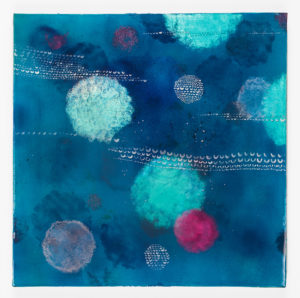
In my last blog post, I introduced you to the idea of including meditation into your daily life as a way to begin tackling those negative internal voices that so often cripple us as artists. I know that a lot of people may be skeptical of how helpful a meditation practice can be, but the benefits of becoming more aware can only serve to help us grow as artists.
A couple of years into my meditation practice, when I was still struggling in the studio with insecurities and self-criticism, I remember a big breakthrough. I was working on a very large painting. It was my largest painting to date and I had invested a lot of time and money making it. But the piece felt flat and unpainterly to me.
I remember one day looking at it and it felt totally unsolvable. I just hated the piece. And I couldn’t think of how to solve it. I was feeling frustrated and discouraged and because I had spent so much on the materials, the thought of abandoning it didn’t seem a viable option. For some reason that day, I had the presence of mind to just stop and sit with it. Not try to think it through or solve it, just be present with it, as I would in meditation. And in that silence, I got an idea for something to try. Since it was about the worst painting I had ever made, I had nothing to lose. When I tried my new idea, I was completely delighted with the results and full of exhilaration and fresh energy for the piece. I broke through what I call “the Wall.”
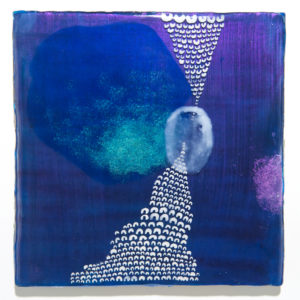
“The Wall” seems to happen over and over in creative work. It’s when you are at an impasse. You’ve already invested quite a bit into the project. So it definitely feels like more is at stake. It can feel like there’s no way out, no solution.
Sometimes the best way through is to do “nothing.” By nothing I mean to empty oneself and become receptive. Meditation can teach us how to do that.
A daily practice of meditation teaches us to discern between mind chatter and our inner wisdom. It’s easy to get caught up in our thoughts, circling over and over with various possibilities and choices without gaining clarity. Without awareness, our thoughts drive us. Having your thoughts driving you is like being dragged around behind a wild unruly stallion. I am inviting you to learn how to get back in the saddle, and guide your mind by developing a respectful, cooperative relationship with it. When we can get some distance between our self and our thoughts, we can choose our thoughts.
What is remarkable is that when we shine the light of awareness on a problem without identifying with it, this problem tends to become less daunting. In our calm awareness, insights and solutions naturally arise. We may be inspired to action, but without the sense of willfulness and effort we may have formerly applied to similar situations. For example, in the past when I was frustrated with a painting, I might have pushed on through, painting over and over it even though I knew it wasn’t going well and I wasn’t enjoying it. I would apply my willfulness and work ethic, hoping for some kind of resolution. And sometimes that approach does work. But these days, when I am at an impasse, I am more likely to stop, sit quietly, close my eyes and go inward, allowing ideas to enter my head. It never takes long, and the most unexpected and delightful solutions present themselves.
What do you do to break through blocks and barriers to creativity or move past what I call “the Wall” in your own practice? I invite you share your thoughts in the comments below.
Leave a Comment
Meditation and the Studio: Becoming Aware
It may surprise you to learn that I wasn’t a star pupil in art school. Not one of those students who carried those black, hard-backed sketchbooks everywhere, bursting with sketches, paintings and collages. Not the kind of art student who spent every waking hour making things. I was a diligent, attentive student. I did the assigned work, attended every class and loved it all. But when I started, I hadn’t the first clue how to turn out original work.

After graduation, I went through a difficult period in my creative life. I knew I wanted to devote my life to making art. But crushing self-doubts and critical voices plagued me every time I tried to work in the studio. I showed up to the studio regularly and managed to get work done, but I suffered from inexplicable fatigue due to the inner emotional stress of these critical voices. I sometimes grew distracted and unfocused. I sought out self-help books and groups for creative people, and slowly and subtly things began to change.
In my work as a teacher and artist for over thirty years, I know of many artists can relate to this feeling of paralysis or being stuck. For me, turning to mindfulness and meditation helped me make that shift to becoming the artist I am today. A lot of people believe that meditation or mindfulness is about reaching some exalted state, but it is actually about learning to be present.
When we practice meditation we naturally become more aware. Aware of our thoughts, our unconscious habits, the feelings and thoughts of the people around us, our impact on others. And the longer we practice, the more we notice. We notice subtle things that were always there – we just couldn’t see them before. Sort of like someone whose fuzzy vision becomes clearer with a new pair of glasses.
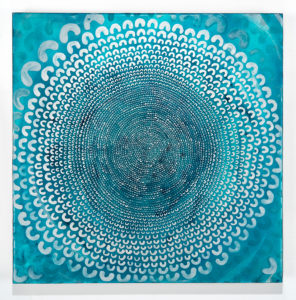
This type of deep noticing can have a profound impact on our creative work. As Paul Valéry put it: “To see is to forget the name of what one is seeing.” By being fully present with what we are creating, we can move beyond preconceptions and habits and encounter the work afresh.
If you’ve never spent time meditating before, you may find your mind to be a very messy place. Most of us have habits and patterns of thought that we unwittingly developed in our youth by simply imitating the patterns of thought of those around us. Patterned thoughts become like grooves in our brain – neural pathways – that can create habits of self-criticism, fear, doubt, cynicism, pessimism or worry. We scarcely notice them because they are so ingrained in us. And if we don’t notice them, we can hardly be aware that it is those habits or patterns of thought that are driving the circumstances around us.
If you are new to meditation, here are a few simple steps to experiment with it:
- Set aside 5 minutes each morning. As early as possible upon arising is easiest because your mind is still fresh and you don’t have as much resistance to the idea. (I’m too busy, I don’t feel like it, it’s too hard.)
- Find a comfortable and pleasant place to sit. One where you can sit in the exact spot every day.
- And if you have a smartphone, I suggest setting a timer with a gentle ring so your mind doesn’t need to be preoccupied with how long five minutes exactly is.
- Settle in: Ensure that your posture us upright, your chin ever so slightly turned down to elongate the back of your neck. Allow your shoulders to be comfortably loose and relaxed, with your shoulder blades on the same plan as your spine, rather than hunched forward.
- Gently close your eyes and just notice that breath. Pay attention as it fills your lungs quite easily and naturally, and then as it is expelled just as easily through your nostrils.
Thoughts will arise. About whether you remembered to take out the garbage last night, or the first appointment of the day, or that annoying thing your co-worker said yesterday. But you are not going to engage with those thoughts just now. You are going to notice the warmth of the breath as it gently flows in and out. And how your jaw has naturally unclenched and how every muscle is gently melting, releasing habitual tension. And the thoughts may come back: How long has it been now? Surely five minutes is up. I can’t sit here doing nothing! I have so much to do today! And then like a little child who has wandered off, you will gently take your mind by the hand and lead it back to the present moment.
If it helps, you can count your breaths. But just stay with the breath. And without noticing it, you have actually drifted into deep connection. You are not thinking. Then you notice that you are not thinking, and now you are thinking again. And so, you go back to your breath. Such is the task of a meditator. Like trying to take a knot out of a tiny thread with a needle. But hang with it. Please. It gets easier. Because you will untangle that knot and then that tiny thread will stretch out before you free of its knots. Before you know it, there is no thread at all.
Do you currently practice meditation in your daily life? Share your experiences in the comments below!
Leave a Comment
Art is about “We,” not “Me.”
Do you ever feel hesistant or uncomfortable about sharing your work in a public forum? Here’s a possible reason why – you don’t want to attract attention to yourself. Here’s how to take your “Self” entirely out of the equation.
In this vision, I really FELT myself and my work as belonging to the community. Can you close your eyes and imagine this for yourself?
Leave a Comment
Motivation to Create! Six reasons to go make stuff NOW!
We all need a little push now and again. Sometimes we’ve just gotten busy and neglected making art for a little while or maybe we had a job or were raising children and neglected it for a good long while.
Whatever the reasons, here is some inspiration to help get you back to work! If not RIGHT this moment, then hopefully sometime in the very near future!
- Think how good you’ll feel when you do!
- Only by doing it will you be able to move through ‘the wall’ to free creative energy.
- You need creative time to bring out the best in yourself.
- The Butterfly Effect – Your creativity effects other in ways you will never know. You don’t have to be a “famous” artist to have an impact. Just think of how we are still affected by the cave paintings done over 6,000 years ago by anonymous early humans or the baskets, weavings, ceramics, etc. created by people in civilizations who predate ours.
- It’s an antidote to consumerism. Adds to the good in the world.
- Creativity connects you to something greater than yourself.
Now go make something. NOW. Go do it! Even if it’s just for 10 minutes! Yay!!
If you’ve been missing making your art, share below and let us know which reason resonated the most with you?
What are some other reasons you can come up with to do your creative work?
Leave a Comment
Cultivating Inspiration
One key to supporting healthy, productive innovation is stimulating inputs.
I think it’s funny when people say they are “waiting for inspiration to strike.” My experience of making art without ever suffering through an artist’s block is that you must commit to working regularly and cultivate inspiration much as you might cultivate a garden.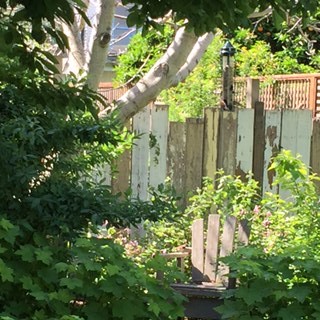
If we want to stimulate creativity it’s helpful to take note of what inspires us and make it a priority in our lives.
For me that can come in many forms such as of gardening, walking in nature, meditation, looking at other art, dancing or listening to music. Have you ever left a wonderful exhibition and could hardly wait to get back into your studio?
Have you ever taken a nap to solve a creative problem? I keep a futon in my studio and take naps when needed. Frank Lloyd Wright, Joan Miró and Buckminster Fuller were all known to be nappers. 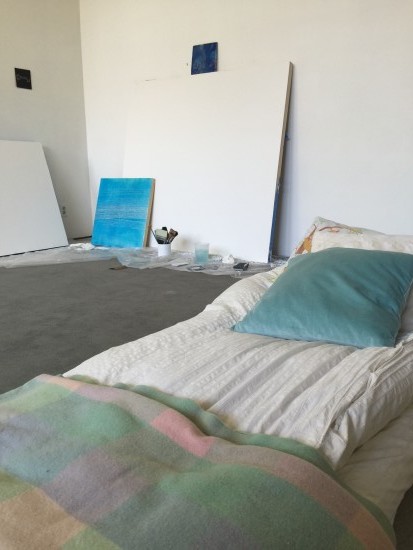
Meditation can work in a similar way. By releasing the day-to-day drool of the mind (What should I make for dinner tonight? Did I remember to pay the water bill), we can clear a space for more expansive thoughts.
I’ve called meditation the express highway to creativity. The fact is we are all enormously creative, we just need a way to clear the mind clutter to access the portion of our mind where our inner genius hangs out. That’s why I start each session of the Mindful Artist Master Class with a guided meditation (recorded so you can listen to it at any time in the future).
Other times, it’s not emptying our mind needs but stimulation.
Once I was on an artist residency in a remote area on the Northern California coast. The foundation served only one artist at a time so as to minimize contact with the outside world. There was no internet, telephone, TV and no recorded music was allowed. And outside of minimal contact with the caretakers, there was no other human interaction.
While this was lovely and fulfilling for days, after about a week or so I began to feel a bit listless. Generally, I feel replenished by all the time I spend alone. However, there is a balance of too much time alone and I had exceeded it for the first time EVER.
I learned that connecting with other is something that fills me up and leaves me inspired to create.
Have you thought much about what makes you feel filled and ready and eager to make art? Please respond below!
Suggested homework:
- Make a note in your journal of 5 things that help you feel juiced up to create.
- If you haven’t done some of them recently, set an appointment in your calendar – a date with your creative self – to do one of these things in the next two weeks.
Leave a Comment
Crowdfunding for Artists
Many artists with big ideas feel thwarted or confused as to how to get necessary funds. Have you dreamed of having a a catalog of your work? Do you wish to mount an exhibition in another city but don’t have money for travel? Is there an ambitious project on your list that requires significant monies for material or fabrication?
There are many avenues for securing funds for your art – there are grants from foundations, government or non-profit organizations, private donations, saving your own income. In recent years, crowdfunding – raising funds through small amounts of money from a large amount of people – has offered an alternative making raising money even easier and within the artist’s direct control rather than a jury or granting organization.
Hatchfund is a non-profit organization in the United States that gives hands on support for artists to fully fund their creative ideas. What’s different about Hatchfund is that all contributions are tax-deductible and their success rate is two to three times higher than other platforms due to their emphasis on support and education.
I had a nice Skype chat with Program Officer Stephany Campos, a who explains how it works.
How is HatchFund different?
• All the funds raised goes to the artist.
• A real life Project Manager works with each artist.
• More flexible than other crowd funding sites.
• A very high 78% success rate.
• Non-Profit so all donations are tax deductible.
More information can be found at
http://www.hatchfund.org
Please tell us in the comments section – what would YOU like money for as an artist?
Leave a Comment
